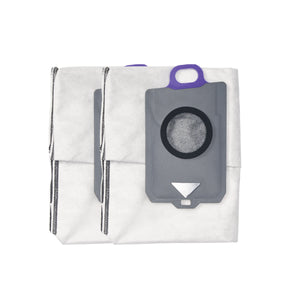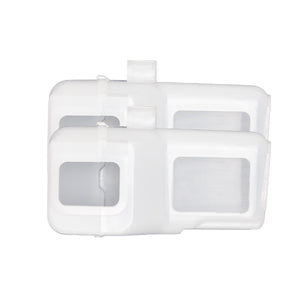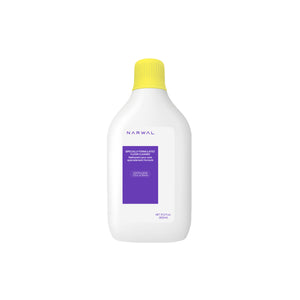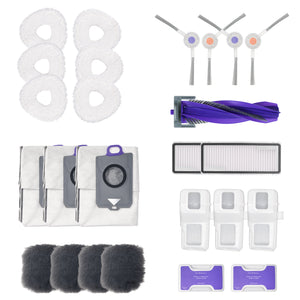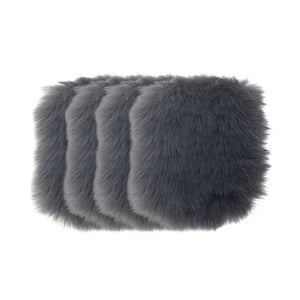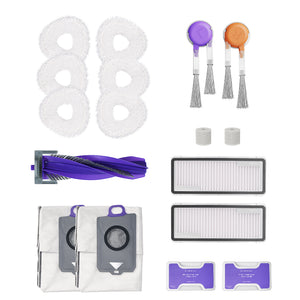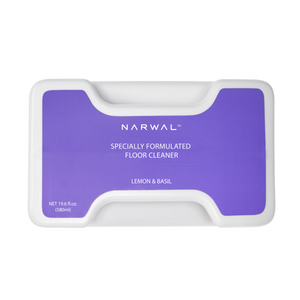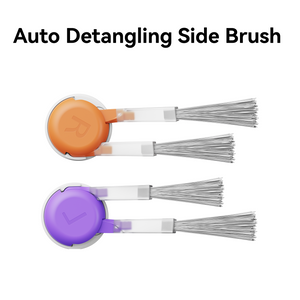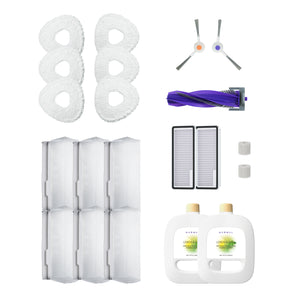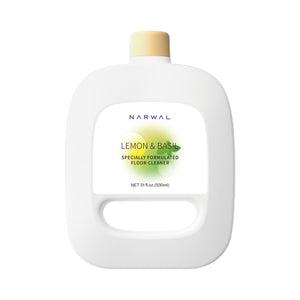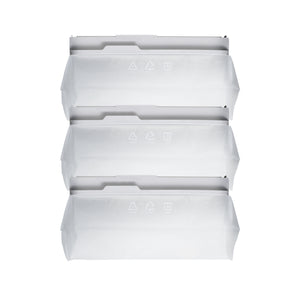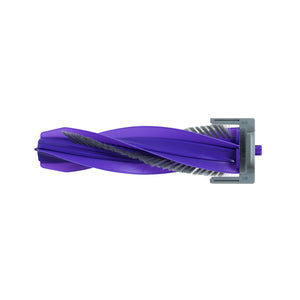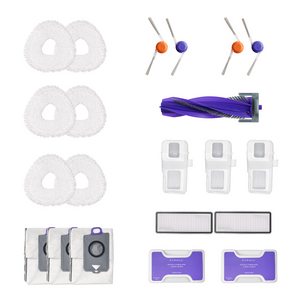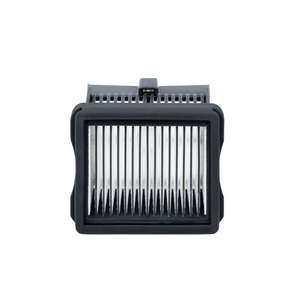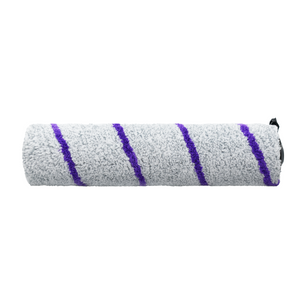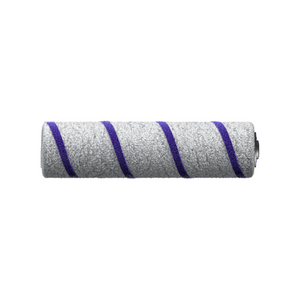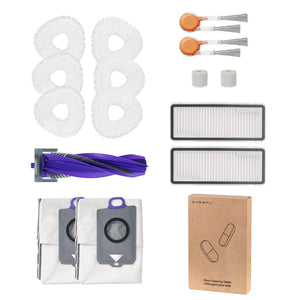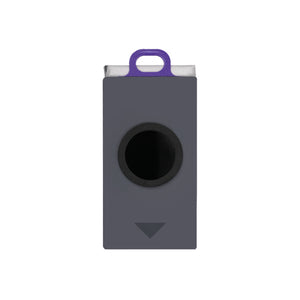Vacuuming should be simple, but for many cat owners, it turns into a stressful event. The loud noise, sudden movements, and unfamiliar presence of a vacuum often leave cats anxious and hiding.
This guide shows you why cats react this way and offers clear, effective solutions to help your cat feel safer. You’ll learn 4 practical methods to ease their fear, common mistakes to avoid, and insights into how different cats respond.
Why Are Cats Scared of Vacuums?
Most cats are scared of vacuums because of the loud noise and large size. Vacuums produce high-pitched sounds that are stressful to a cat’s sensitive ears.
Cats have exceptionally sharp hearing and can detect higher frequencies than humans — up to about 64 kHz — which makes mechanical sounds like those from vacuums especially uncomfortable. According to Wikipedia’s overview of feline behavior, cats rely heavily on predictable environments and are highly sensitive to changes in sound and movement, both of which can trigger stress or fear.
In addition to noise and size, there are other reasons why cats may fear vacuums:
-
Unpredictable Movements: Vacuums move in ways that cats can’t predict, which makes them nervous.
-
Territory Invasion: Vacuums enter areas that cats see as their own space, making them feel unsafe.
-
Lack of Familiarity: Cats that didn’t see vacuums when they were young are more likely to be scared.
-
Past Negative Experiences: If a cat was scared by a vacuum before, it may always feel afraid of it.
Most cats fear vacuums due to sound sensitivity, unpredictability, and the invasion of their personal space. Understanding these triggers helps you create a calmer and safer environment when cleaning.

How to Get Your Cat Used to the Vacuum Cleaner (4 Gentle Methods)
To help your cat feel safe around a vacuum, patience and consistency are essential. Each cat reacts differently — some respond to rewards, while others need slower, steady exposure. Here are four gentle, vet-approved methods to help your cat adapt calmly.
1. Use Treats and Rewards
Goal: Build a positive association between the vacuum and your cat’s favorite experiences.
Before turning the vacuum on, reward your cat simply for being nearby. Use treats, praise, or playtime — whichever helps your cat feel relaxed. Each time the vacuum appears, give a reward right away, even if it stays off. Over time, your cat will connect the presence of the vacuum with something pleasant. After each cleaning session, reward calm behavior again. Consistent, small rewards create long-term trust and help your cat view the vacuum as harmless.
2. Go Slow and Steady
Goal: Reduce fear by controlling how quickly your cat is exposed to the vacuum.
Start by placing the vacuum in a quiet room where your cat can see it, but keep it turned off. Allow your cat to explore and approach it freely. When your cat seems comfortable, move the vacuum slightly without noise. Once they remain calm, turn the vacuum on for just a few seconds, then turn it off. Gradually increase the time across multiple short sessions. By following your cat’s pace, you build familiarity without triggering fear.
3. Give Your Cat a Safe Spot
Goal: Offer a quiet, secure space where your cat can retreat during cleaning.
Before vacuuming, place your cat in a calm room far from the noise. Make sure the room has comfortable bedding, toys, water, and familiar scents. Vacuum other rooms first and leave your cat’s area for last. After finishing, wait until your cat chooses to leave their safe spot before cleaning that space. Providing a stable retreat helps your cat feel in control, which reduces stress and makes cleaning easier for both of you.
4. Make It Part of the Routine
Goal: Normalize vacuum sounds and movements as part of everyday life.
Cats feel calmer when they know what to expect. Try vacuuming at the same time or on the same days each week, so the noise becomes predictable. For kittens, begin early — younger cats adapt more easily to new experiences. If your vacuum is very loud, consider switching to a low-decibel model. Using a quieter vacuum, such as Narwal’s robot models, can help your cat adjust faster and stay relaxed during cleaning.
Key Takeaways
|
Method |
Focus |
Why It Works |
|
Use Treats and Rewards |
Positive association |
Builds trust and reduces fear |
|
Go Slow and Steady |
Gradual exposure |
Prevents panic and overstimulation |
|
Give Your Cat a Safe Spot |
Environmental safety |
Gives cats a sense of control |
|
Make It Part of the Routine |
Predictability |
Reduces long-term stress through consistency |
If you’ve tried these gentle methods and your cat still feels uneasy, it might also help to look at the type of vacuum you’re using. Some newer robot vacuums are designed to be quieter and less intrusive — even for sensitive pets.
Are Robot Vacuums Better for Cats?
Yes — in many cases, robot vacuums are better for cats than traditional ones, because they are smaller, quieter, and move more smoothly. Unlike upright vacuums that produce loud, unpredictable noises, robot models operate with consistent sound patterns and gentle motion. This makes them less frightening for sound-sensitive cats, helping reduce stress and hiding behaviors.
One example is Narwal Flow, a next-generation robot vacuum and mop designed with both performance and pet comfort in mind. Operating as quietly as 39 dB, it’s so gentle that it sounds like soft rainfall — ideal for homes with anxious cats. Its TWINAI obstacle-avoidance system uses dual RGB cameras and an onboard AI chip to recognize over 200 objects with 0.19-inch precision, ensuring smooth, predictable movement without startling pets.
[cta:flow-robot-vacuum-and-mop]
Narwal Flow’s CarpetFocus Technology detects carpets automatically, while its Dynamic EdgeReach track mop extends within 5 mm of walls to clean corners carefully. This calm and adaptive approach keeps your home spotless without creating stress for your cat.
If your cat tends to be nervous around vacuums, try introducing a robot model gradually — first by letting it move while turned off, then running it for short sessions. Choosing a quiet, predictable cleaner like Narwal Flow helps your cat adjust at their own pace and feel safe during every cleaning routine.
Mistakes to Avoid With Cats and Vacuums

When helping your cat adjust to the vacuum, avoiding common mistakes is just as important as using the right methods. These mistakes can make your cat’s fear worse or slow down progress.
-
Starting Too Fast
Introducing the vacuum too quickly can overwhelm your cat. Sudden changes often increase fear and make future training harder.
-
Forcing Close Contact
Pushing your cat toward the vacuum or trapping them near it can raise their stress. Cats need space to feel safe and should approach the vacuum on their own terms.
-
Ignoring Signs of Stress
Missing the signs of fear, such as hiding, flattening ears, or wide eyes, can lead to setbacks. Watching your cat’s body language helps you adjust your approach in time.
-
Vacuuming Without a Plan
Cleaning without a clear plan can cause unnecessary stress. Vacuuming randomly or without setting up a safe spot leaves your cat with no place to escape.
-
Inconsistent Routine
Irregular vacuum use makes it harder for your cat to adjust. A steady cleaning schedule helps reduce surprise and builds familiarity over time.
Are All Cats Scared of Vacuums?
Not all cats are afraid of vacuums. Some cats naturally stay calm around them, and a few even enjoy being near the vacuum. There are cats that like to watch it move, and some may even enjoy the feeling of being gently vacuumed.
Each cat has a unique personality. Some cats will never fully overcome their fear of vacuums, no matter what methods are used. In these cases, it is important to respect their limits.
If your cat shows extreme fear, such as shaking, hiding for long periods, refusing to eat, or losing control of their bladder, it is best to limit vacuum use around them. In such situations, your cat’s safety and well-being should always come first.
Many cats are more comfortable with smaller, quieter vacuums, such as robot vacuums. These machines often produce lower noise levels, which can help reduce stress. Narwal robot models can operate at sound levels below 55 decibels, making them easier for cats to tolerate during cleaning.
How Do You Calm a Scared Cat Down?
If your cat gets scared by the vacuum, it is important to help them calm down in a safe and gentle way.
First, give your cat space. Let them hide or move to a quiet area on their own. Do not force them to come out or hold them down, as this can make things worse.
Keep the environment calm. Turn off loud devices, keep lights soft, and avoid sudden movements or loud talking. A quiet and steady space helps your cat feel safe again.
You can also use familiar items to comfort your cat. Soft blankets, favorite toys, or a piece of your clothing with your scent can help your cat relax.
If your cat allows it, gentle petting or calm talking can also help ease their fear. However, only do this if your cat approaches you first.
In some cases, using calming products like cat-safe sprays or diffusers can also help. These products release scents that make cats feel more relaxed.
Always stay patient. Every cat needs a different amount of time to calm down, and pushing them too soon may cause more stress.
Once your cat feels calmer during cleaning, the next step is learning how to make that calmness last — even when the vacuum becomes part of everyday life.
Cats and Vacuums — How to Help Them Coexist Comfortably
Once your cat has learned to stay calm around the vacuum, the next step is helping both coexist peacefully in daily life.
Cats thrive in predictable environments, so the goal is to make cleaning part of the background — something that happens quietly and regularly, without disruption.
Start by keeping consistent cleaning times. Cats feel safer when they can anticipate noise and movement. Schedule vacuuming at similar hours each week so your cat knows what to expect.
Provide quiet, cozy retreats — a soft bed in another room or a perch away from the cleaning path — to give them a sense of control and security.
Choosing a low-noise, smooth-moving vacuum also makes a big difference. Advanced models like Narwal Flow operate as quietly as 39 dB and move predictably with AI-guided navigation, creating far less disturbance than upright vacuums. This steady rhythm helps cats stay relaxed even while cleaning is in progress.
Finally, after cleaning, spend a few minutes reconnecting with your cat — gentle play, petting, or treats reinforce the sense that everything is normal. Over time, these small routines teach your cat that vacuums aren’t threats, but just part of everyday life.
Peaceful homes don’t just happen — they’re built on calm habits, smart choices, and mutual understanding between people, pets, and technology.
 Enjoy a Home Where No Cat Stays Scared of Vacuum
Enjoy a Home Where No Cat Stays Scared of Vacuum
Every cat is different, but one thing stays the same. Peaceful homes make life easier for both pets and people. For those who value quiet comfort, smart cleaning choices matter more than ever.
Many cat owners are now choosing cleaning tools that quietly do their job in the background, leaving more time for quiet moments with their pets.
Narwal brings quiet comfort to modern homes — cleaning gently in the background so you and your cat can enjoy peaceful moments together.
FAQs About Cats and Vacuums
1. Why is my cat scared of the vacuum?
Cats are scared of vacuums because of the loud noise, sudden movement, and vibration. To a cat’s sensitive hearing and cautious nature, these signals feel like danger rather than cleaning.
2. How to acclimate a cat to a vacuum?
Start by keeping the vacuum turned off and rewarding calm behavior. Gradually introduce sound in short sessions, increasing time slowly as your cat stays relaxed. Never chase or force your cat to approach it.
3. Can I vacuum with my cat in the room?
If your cat is confident or curious, yes — just keep noise low and movements predictable. For anxious cats, place them in a quiet room with familiar toys or blankets until cleaning is finished.
4. What annoys cats the most?
Cats dislike unpredictable sounds, strong smells, and sudden changes in their environment. Vacuums often combine all three, which can trigger stress or hiding behavior in many cats.
5. What is the vacuum effect on cats?
The “vacuum effect” describes the short-term stress cats experience when they hear or see a vacuum. It’s a natural fear response — their body prepares to flee from a perceived threat, even if it’s harmless.
6. How often should I vacuum with a cat?
Vacuuming once or twice a week is ideal. Regular exposure helps cats get used to the sound while keeping their environment clean and allergen-free, which can also reduce long-term stress.
7. What are common signs of cat anxiety?
Signs include hiding, trembling, flattening their ears, over-grooming, or sudden aggression. These behaviors often appear when cats are exposed to loud or unpredictable sounds like vacuums.
8. How do I get my cat to stop being jumpy after using the vacuum?
After cleaning, give your cat time and space to settle. Speak softly, avoid sudden movements, and offer treats or gentle petting once they reappear. Calm, predictable routines help them feel secure again.





















